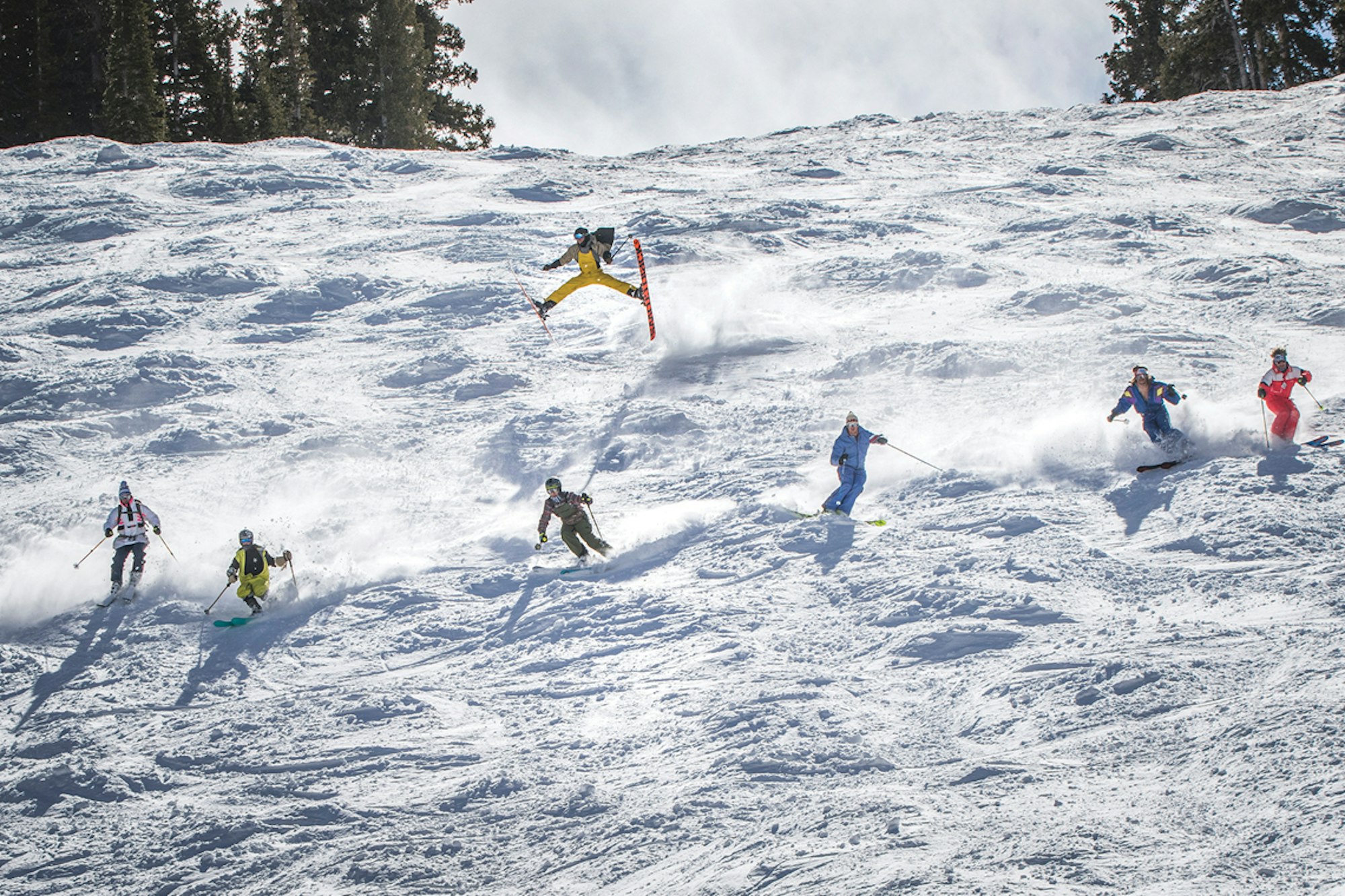Featured Image: Erik Seo
An army of 31 ski testers, including the FREESKIER staff, and representatives from skiing’s top brands are holed up at Snowbird, Utah for the annual FREESKIER Ski Test. The crowd is gathered in the Tram Club, the bar below the resort’s iconic aerial tram. Outside, a deafening wind roars up the canyon from the west—an early March snowstorm is wrapping its arms around Little Cottonwood Canyon.
Inside, old pals catch up and new friendships are forged. Everyone is briefed on expectations for the week and, of course, the entirety of the group hungrily speculates about the impending powder day. As the minutes tick by, people begin to take notice of a trend: More and more of the individuals who are sauntering into the Tram Club are sporting a healthy dose of snow upon their shoulders and heads.
In turn, the troop flocks like birds of a feather to the front door; outside, flakes the size of quarters are billowing down with hurricane-like force. Jaws drop, eyes widen and in unison, testers pile into cars and high-tail it to their accommodations, eager to get some shut-eye in preparation of what promises to be a deep first day of the 2017-18 Ski Test.


KABOOM! The inhabitants of our rental house on Powder Run Road wake with a start; the building rattles right down to its foundation. BANG! A second blast echoes around the canyon walls, convulsing the house. Then another. And another.
“Are we in a war zone?” I ponder in my drowsy state. The sun hasn’t quite crested the horizon, and it’s still dark as night in the bunk-room where I lay. It’s as if the Battle of Gettysburg is happening right outside the window. I realize, as the early morning fog lifts from my brain, that instead of Civil War-era cannons I’m hearing howitzer shell detonations on the peaks above, the result of avalanche mitigation work by the Utah Department of Transportation and neighboring ski resorts Snowbird and Alta.
I fumble to find my phone and check the snow report: 14 inches overnight. Buzzing with curiosity, I stumble downstairs and open the front door to a sign strung across the threshold with the following bulletin:
“Interlodge Travel Is Closed. Do Not Go Outside. Disregarding This Notice Is Hazardous And Will Result In A Fine. By Order Of: The Marshal’s Office.”
We’re trapped like rats—rats that have picked up the irresistible scent of light, dry, smoky powder—until mitigation work has concluded. We’re all geared up in the living room, impatiently waiting for the “all clear.” For locals, the blizzards and ensuing avalanche con- trol are a regular occurrence. For much of our testing squad, the “Interlodge” is a first-time experience. The blasting is relentless.
More than an hour after the first blast rang out, the house phone rings. On the other line is the property manager who informs us that it’s now safe to venture outside. Like a pack of wolves converging on a fresh kill, the crew fights for position in the hallway and funnels out the door. Just down the hill from us, a foot-plus of snow and a giant yurt’s worth of next year’s best powder skis are beckoning.
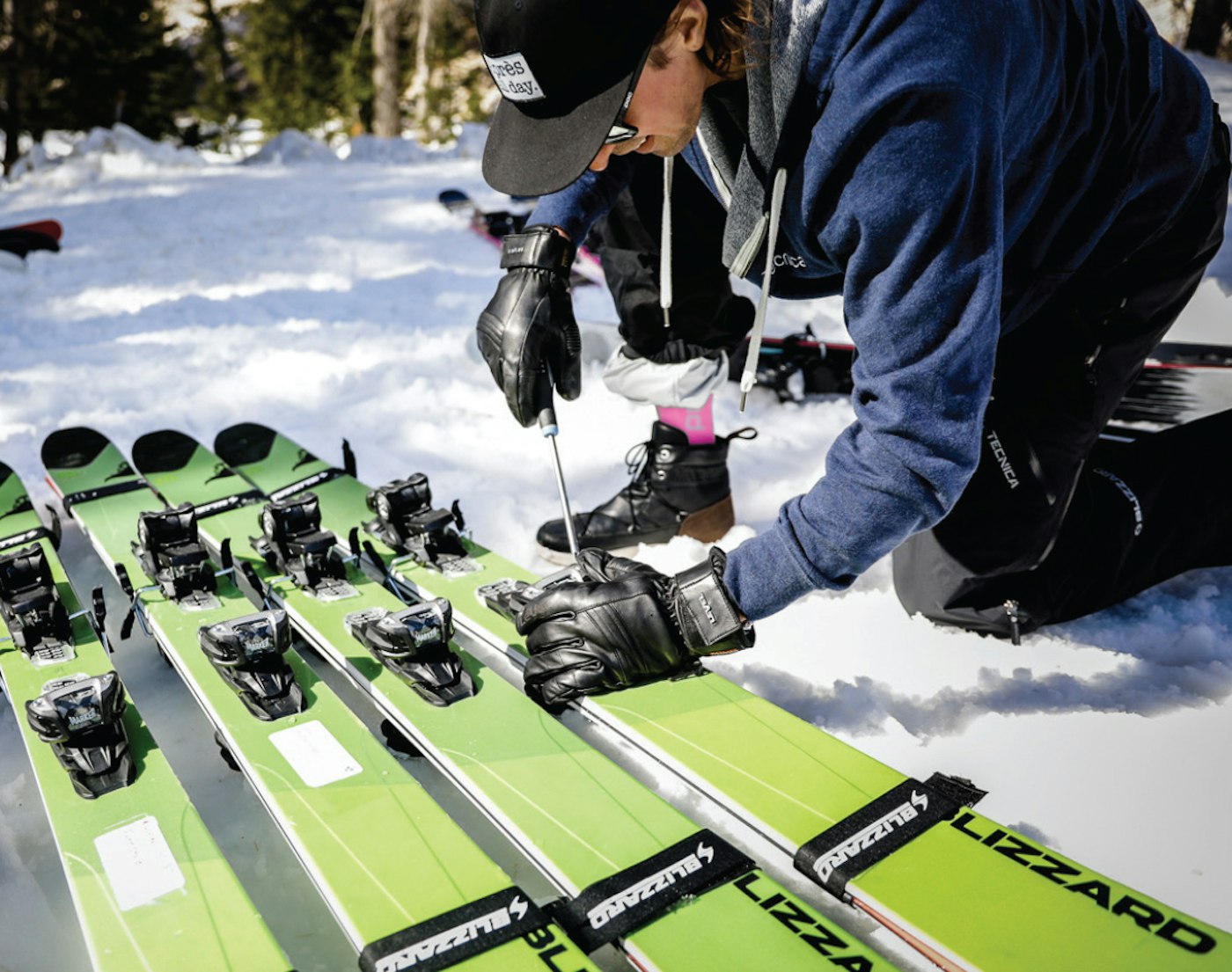
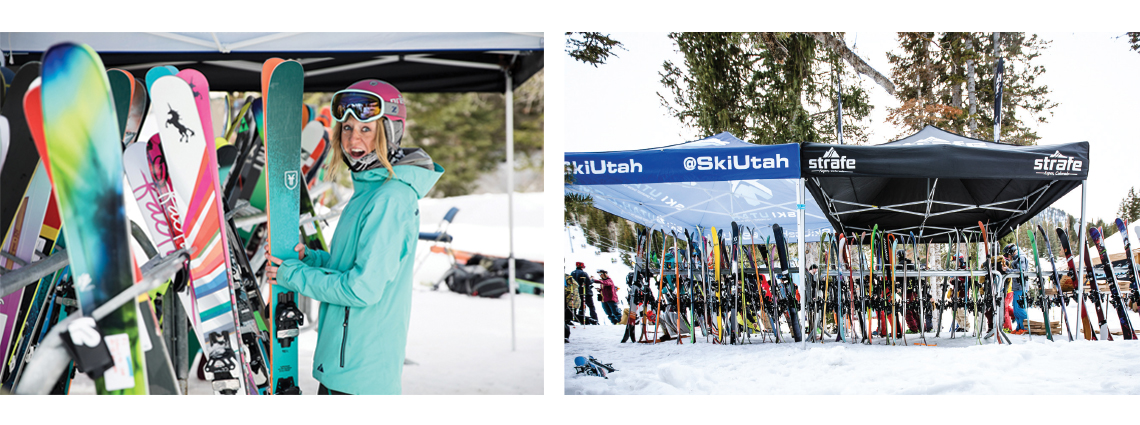
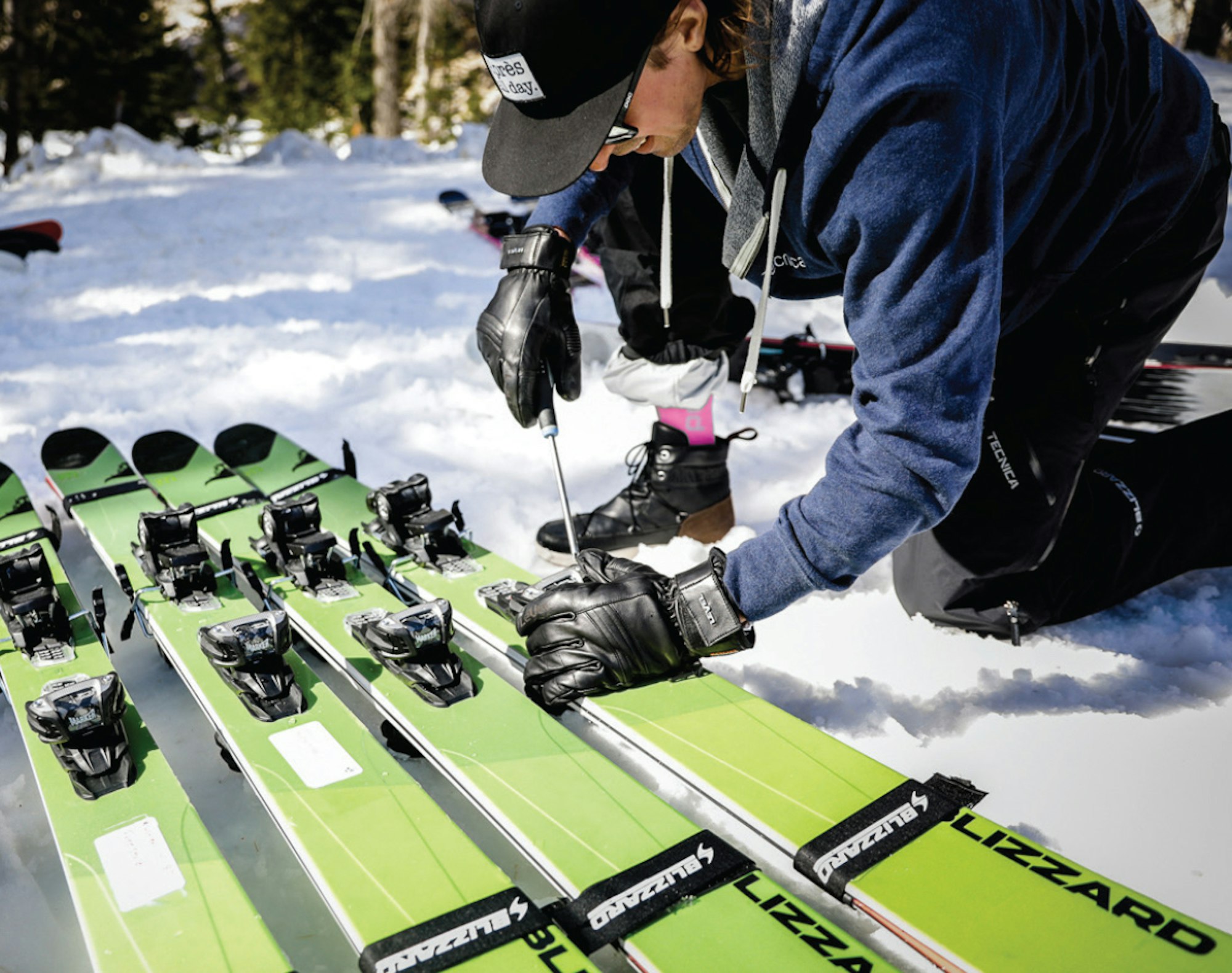

On the very first day of our test, we sailed through stormy waves of powder on skis with waist widths of 114 mm and above. We plowed through 14-plus inches of cold, dry snow across Snowbird’s Gad Valley. Whether dropping cliffs, slithering down tree-laden steeps or straight-lining open faces, we skied until our legs wobbled like a newborn deer attempting its first steps. The snow fell all day long, providing endless free refills and a 14-inch powder day that skied more like 24—the cherry on top of the near 100 inches of snow that had fallen the week prior.
On day two, the blue birds soared above our mountainous playground, allowing Snowbird’s ski patrollers to open the resort’s steeper terrain—un-ski- able during the storm itself for safety reasons, but now filled with bottomless, virgin snow. We piloted another set of 114-mm-and-up skis, these ones more freestyle-centric than the first batch. With playful, poppy powder planks strapped to our feet, our troop slashed, smeared and pressed around the mountain. We ravaged waist-deep snow in Mineral Basin and also uncovered the forgotten stashes off the Gad 2 chair, still untracked one full day after the storm.
Our third day was spent speed-dating a group of skis with waists between 100 and 113 millimeters, of both the freeride and freestyle distinction. Testers investigated the skis’ mettle through chunder, chop and crud while seeking out leftover pockets of deep snow that lay hidden in the trees and hard-to-reach zones across Snowbird’s 2,500 acres. The diversity and sheer amount of terrain coupled with the entire spectrum of snow conditions ensured we could test mid-width skis—largely built to be quiver-killers capable of handling soft snow one day and hardpack the next—in their optimal setting.
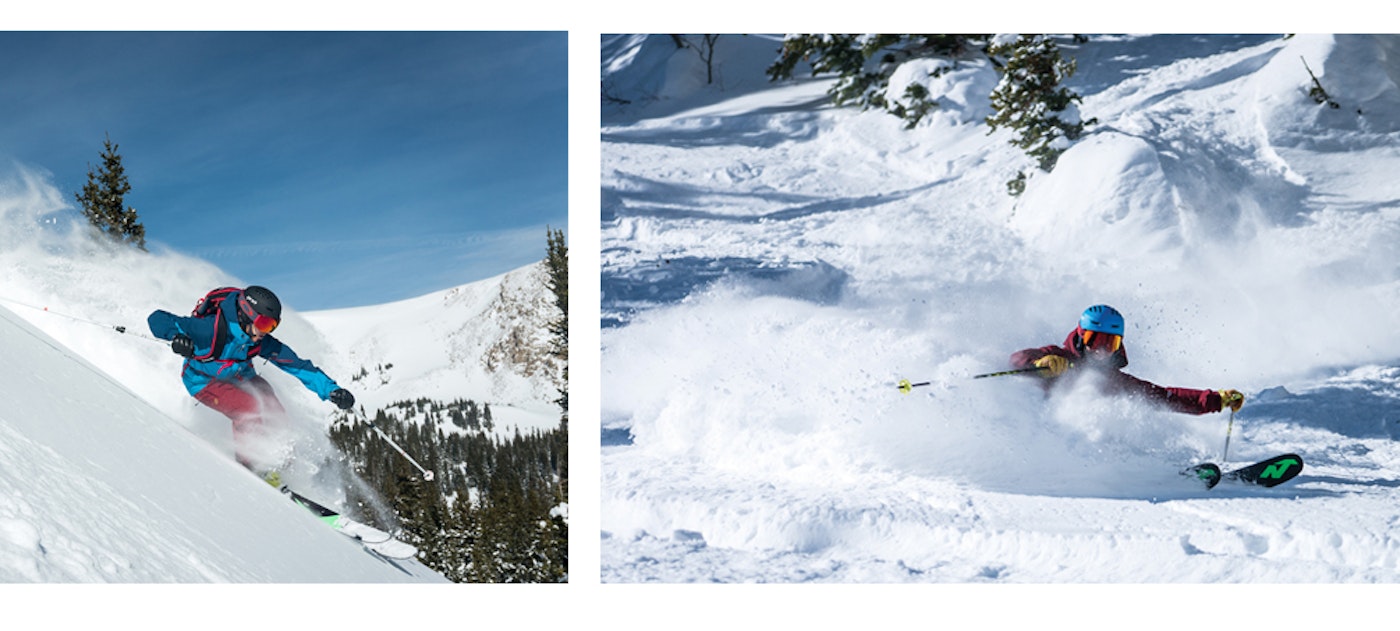
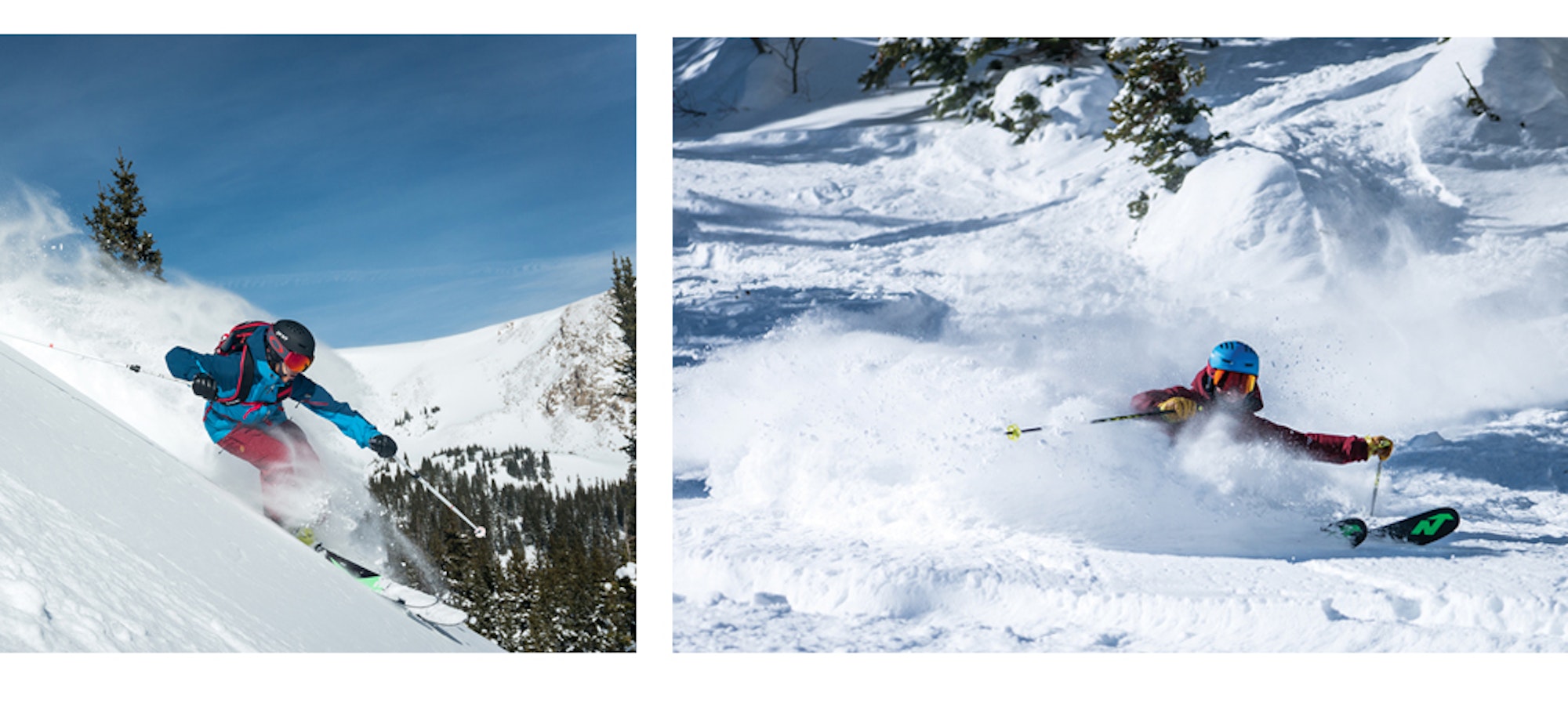
By day four, and rolling into days five and six, a high pressure system sat squarely over Little Cottonwood Canyon; days were warm and nights were cold transforming the heaps of snow deposited early in the week into moguls, chalk fields, fast-as-hell groomers, chundery run-outs and mashed potato bowls—the Promised Land for narrow, 85-99 mm skis. In the early morning, testers etched their signatures into the frozen hardpack on the finest frontside-oriented skis of 2017-18. In the afternoon, they pin-balled down slush bumps and corn-filled chutes, studying the versatility, stability, carving prowess and playfulness of dozens upon dozens of “all-mountain” offerings.
The week couldn’t have played out more in our favor. We were gifted with near-divine snow conditions at one of North America’s greatest resorts. The snow coupled with Snowbird’s terrain and our unmatched ski testing brigade produced flawless ski reviews. The testers compiled an unbelievable amount of data about each and every ski via our custom testing app and the torrent of comments and scores form the meat of the 2018 Buyer’s Guide.

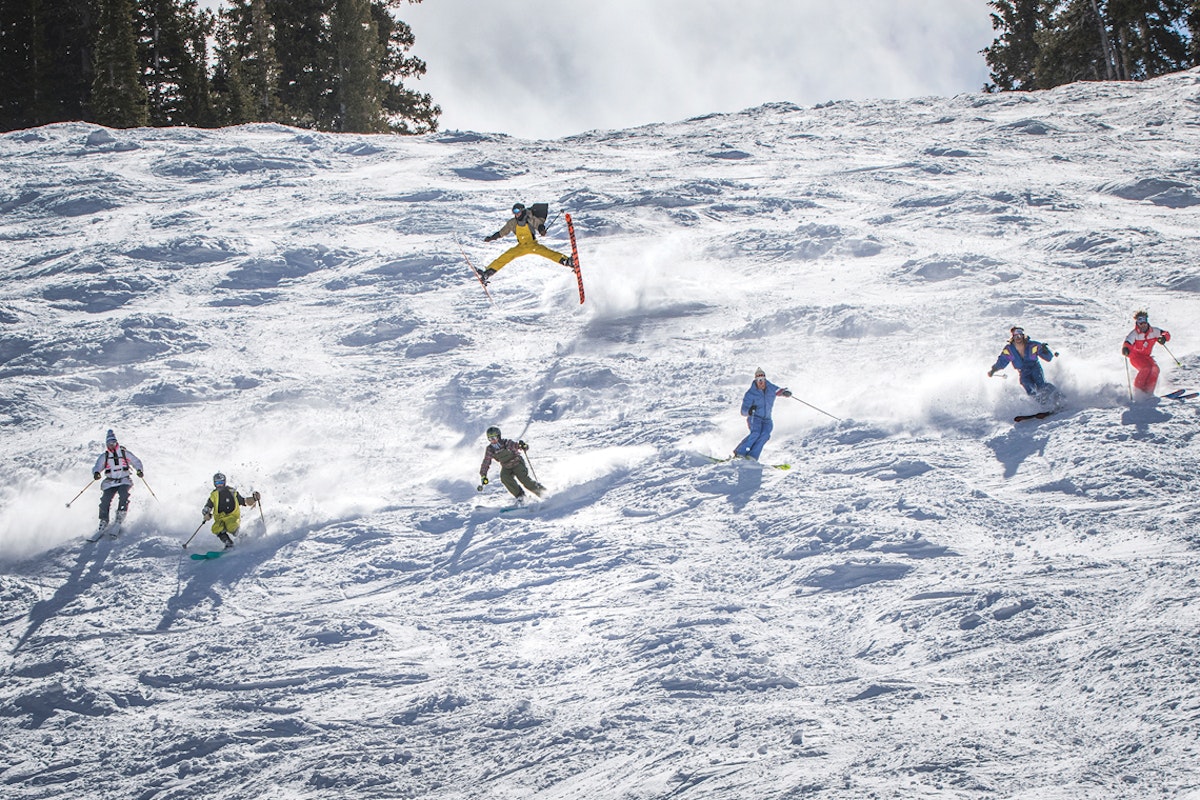

![[GIVEAWAY] Win a Head-to-Toe Ski Setup from IFSA](https://www.datocms-assets.com/163516/1765920344-ifsa.jpg?w=200&h=200&fit=crop)


![[GIVEAWAY] Win a Legendary Ski Trip with Icelantic's Road to the Rocks](https://www.datocms-assets.com/163516/1765233064-r2r26_freeskier_leaderboard1.jpg?auto=format&w=400&h=300&fit=crop&crop=faces,entropy)




![[GIVEAWAY] Win a Head-to-Toe Ski Setup from IFSA](https://www.datocms-assets.com/163516/1765920344-ifsa.jpg?auto=format&w=400&h=300&fit=crop&crop=faces,entropy)


